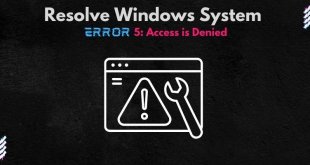In this article, we will discuss the 7 best tips on how to write effective software defect reports. So keep reading.
The software development process is complex and challenging. There are different stages from idea to realization, that need to be carried out in order to successfully finish the project. One of those stages is software testing.
During this stage, testers have the job of trying out different functions and option the software was built to carry out. While doing so, they’re bound to run into certain defects and errors. Once they do, it’s their job to write effective software defect reports.
A software defect report is a written document explaining what the defect is about. It should help developers understand how the defect is manifested, when is it happening, and potentially what’s causing it. As a result, they should be able to fix and remove the defect from the code.
The only way this is possible is for you to write a clear and comprehensive software defect report. You’ll need to provide all the necessary information and ensure your report is accepted as helpful and effective.
If you’re not sure how to do it, just keep reading. Here are the 7 best tips to write effective software defect reports.
1. Defect Title/Summary
When writing your software defect report, you need to make sure it’s concise but informative. You shouldn’t write a long narrative description of how you found the defect, but simply provide the necessary information for the developers to use.
This is why your report should start with a defect title or a very basic summary of what the problem is.
This title should:
- be one sentence long
- summarize the whole problem
This is no place for longer descriptions, that comes later. Keep this title summary short and accurate. Here are a couple of examples:
- User registration button not responding to the user request.
- Clicking “Log in” refreshes the page instead of logging the user in.
- The option for selecting PayPal as a payment option isn’t working.
This summary is brief yet it clearly indicates what the problem is about. After you report this successfully, move on to the next step.
2. Defect Description
Now it’s time for you to write a more elaborate explanation of the defect you’ve found. Once again, you need to keep your writing clear. Here’s how:
- write short, informative sentences
- avoid overly technical vocabulary
- follow a logical order in describing the problem
- use natural, everyday language
So, a more detailed description of a problem would be:
- The software allows users to use PayPal as a payment method. When users choose “select payment method”, the PayPal button is there but it doesn’t allow the user to click it. If users try to click it, nothing happens. Other payment method options work properly.
This description adds a bit more detail to the whole story and helps the developers understand the problem better.
3. Steps To Replicate
Every responsible developer will want to make sure the defect you’re reporting is actually there. This is why your report should contain steps that will help them replicate your action and see the defect themselves.
It would be best to organize these steps by creating a numbered list. Number each step and give clear instruction. For example:
- Open the Products tab.
- Select any given product and click “purchase”.
- The payment methods will appear.
- Try choosing PayPal.
Guide the people reading your report through the process to help them examine and experience the defect. Make your instructions short but clear.
4. Expected Result
You will also need to explain what was actually supposed to happen instead of the defect that you’re reporting on. That means that the developers should understand why the defect is a defect and not the desired action. This will help them fix and remove it.
So, give a quick summary of the results you expected to see and explain why the defect is a problem. Here’s an example:
- Once choosing the PayPal option, the software should allow users to enter their PayPal information and continue the purchase process.
Don’t assume that the developers know everything and will be able to read between the lines. They have so much information stored in their heads, it’s hard for them to keep track.
So, clearly define the expected result even though it may seem obvious to you.
5. Provide Proper Documentation
To make your report valid and informative, you should always collect and provide proper documentation. This supporting documentation will support your claims, give additional information about the defect, and make your report more credible.
Supporting documentation is:
- screenshots of the process of detecting the defect
- screenshot of the error that appeared on the screen
- video of you performing an action that led to the defect
- error logs
Whatever helps you explain and report your defect better, make sure to attach it with the supporting documentation.
6. Use Proper Formatting
To make your report easy to read and understand, you should utilize proper formatting. You can’t submit a report that is just one large piece of written text. Instead, follow these simple steps:
- divide the report using subheadings
- create lists and use bullet points when possible
- create short paragraphs of text
So, make sure anyone looking at your report can easily find the specific information they’re interested in, by simply reading your subheadings. You can get help from writing services that help write research and term papers, to present and support your arguments.
7. Be Objective
Finally, you need to make sure your report is objective and factual. You should avoid any subjective, personal, or emotion-packed remarks such as:
- it’s a bad software
- you did a lousy job here
This would be highly unprofessional. Stick to the facts and don’t call any names.
Final Thoughts
Reporting on a software defect is a responsible task since it’s the first step towards improving the software and making it error-free. If you write an effective report, developers will easily spot the defect and fix it.
Use the 7 tips we’ve listed above to improve your software defect reports and make them highly effective and valuable.
Author’s Bio:
Jessica Fender is a copywriter and blogger at GetGoodGrade with a background in marketing and sales. She enjoys sharing her experience with like-minded professionals who aim to provide customers with high-quality services.
 free html design Free html design templates
free html design Free html design templates






